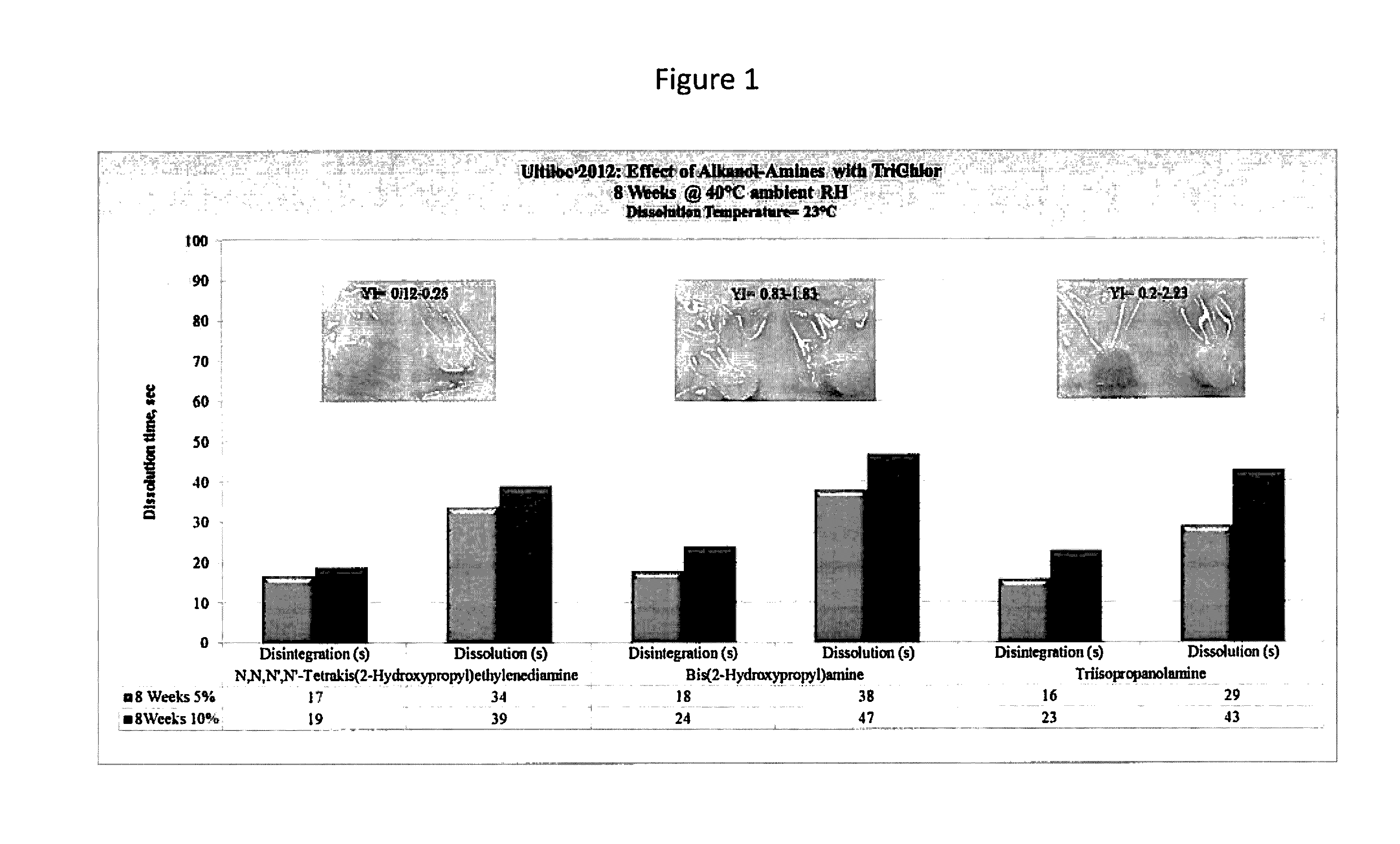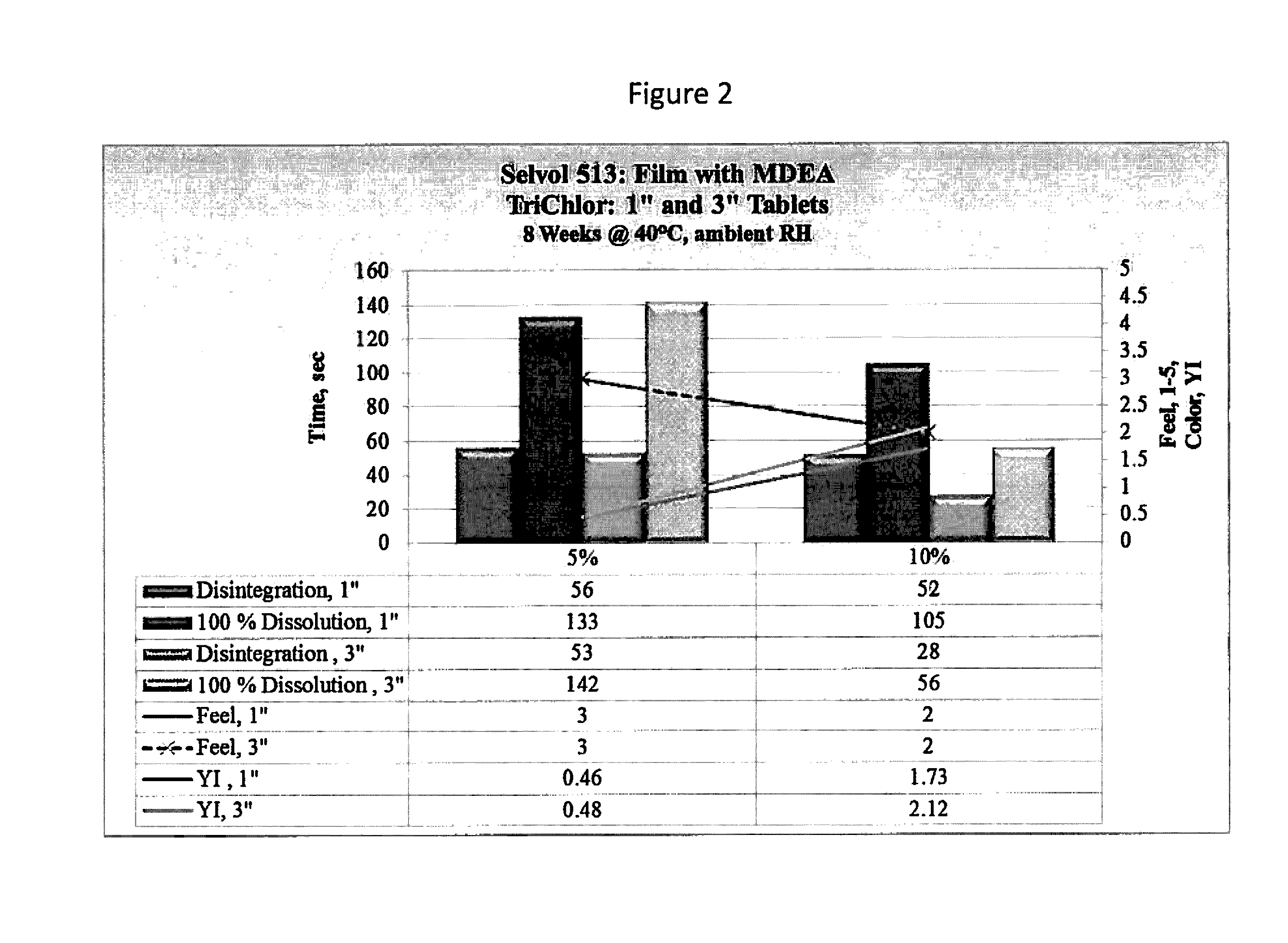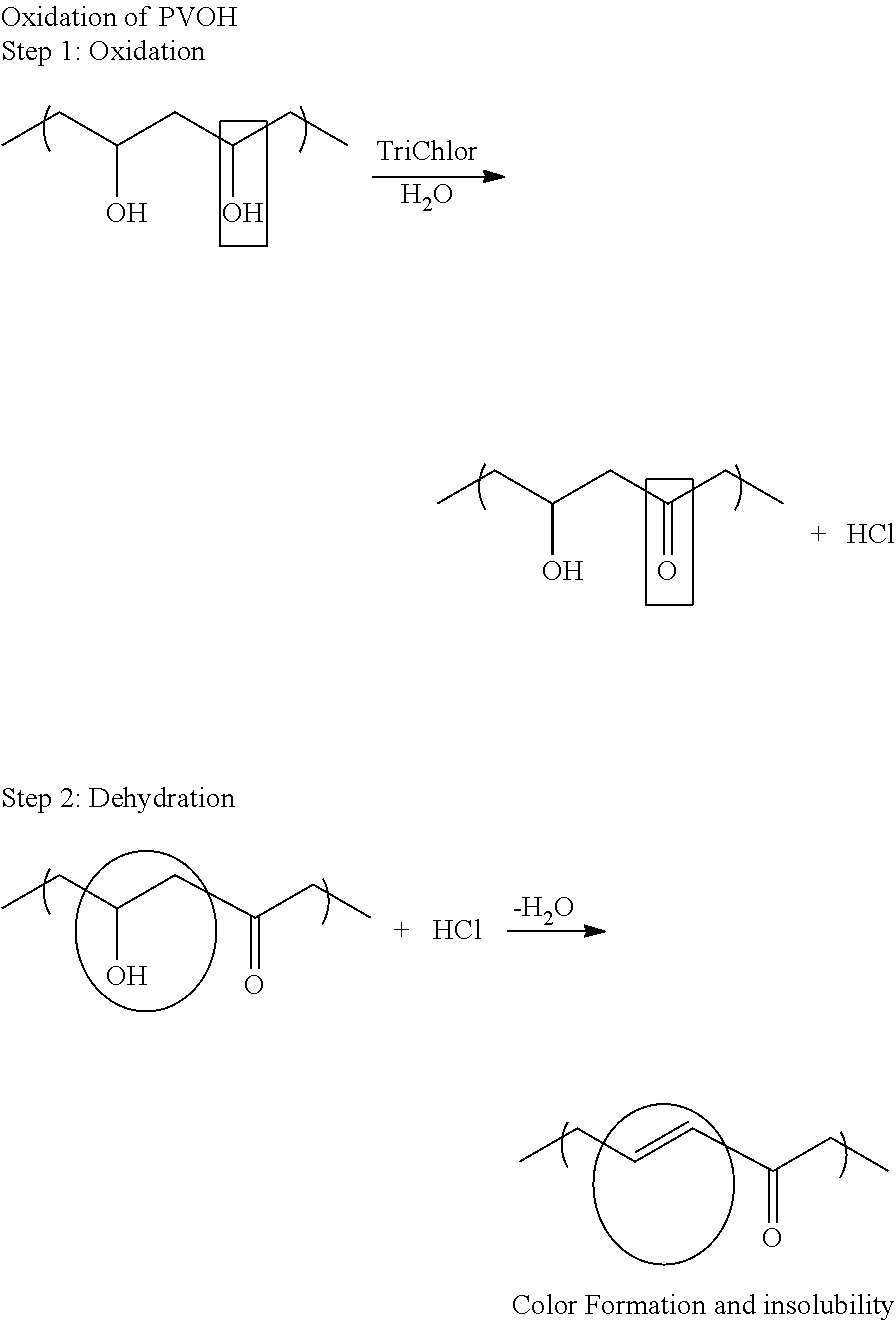Stabilizer for aggressive chemicals packaging
a technology of chemical packaging and stabilizer, applied in the direction of packaging foodstuffs, containers preventing decay, packaged goods, etc., can solve the problems of reducing the handling and exposure to chemical substances, limiting the use of pvoh packaging, and insolubility, color and brittleness during storage, so as to improve the stability and flexibility of the product. , the effect of good color and water solubility
- Summary
- Abstract
- Description
- Claims
- Application Information
AI Technical Summary
Benefits of technology
Problems solved by technology
Method used
Image
Examples
examples
[0086]Various compositions described herein were tested to determine their performance characteristics when used in oxidizing chemical packaging. The testing was performed according to the following test description. Films are prepared from the formulations by casting an aqueous solution of the composition onto a glass plate, which is leveled by gravity and allowed to dry to a moisture content in the range from about 6 wt % to about 15 wt %. An amount of the solution is added to the plate to provide for a film with a target thickness, which may depend on the sample target, such as 38 micron (about 1.5 mil), 50 micron (about 2 mil), 63 micron (about 2.5 mil), and 76 micron (about 3.0 mil); examples herein are made with sheets of about 50 micron thickness, although the exact thickness may vary from about 45 to about 55 microns. The water in the solution is allowed to evaporate, and the resulting films are cut into an approximately 7.6 cm by 7.6 cm square (a 3-inch by 3-inch square) or...
examples 1-6
[0093]Examples 1-6 illustrate the performance of a PVOH-co-AMPS polymer when exposed to the oxidizing chemical TriChlor (trichloroisocyanuric acid). The co-AMPS polymer used was ULTILOC 2012, available from Sekisui Specialty Chemicals, Houston, Tex. Reactive precursors used include bis(2-hydroxypropyl)amine, triisopropanolamine, and N,N,N′,N′-tetrakis(2-hydroxypropyl)ethylenediamine (TK2HPEDA). The test specimens were formulated as shown in Table 2.
TABLE 2SampleComponentWt %Example 1ULTILOC 201294.5TK2HPEDA5.0TRITON X-1000.5Example 2ULTILOC 201289.5TK2HPEDA10.0TRITON X-1000.5Example 3ULTILOC 201294.5Bis(2-Hydroxypropyl)amine5.0TRITON X-1000.5Example 4ULTILOC 201289.5Bis(2-Hydroxypropyl)amine10.0TRITON X-1000.5Example 5ULTILOC 201294.5Triisopropanolamine5.0TRITON X-1000.5Example 6ULTILOC 201289.5Triisopropanolamine10.0TRITON X-1000.5
[0094]The test specimens were formed into unit dose packages and filled with TriChlor as described above. The samples were then tested for water solubili...
examples 7-9
[0102]Examples 7-9 illustrate the performance of a PVOH polymer in combination with an alkanolamine reactive precursor when exposed to the oxidizing chemical TriChlor (trichloroisocyanuric acid). The PVOH used was SELVOL 513, available from Sekisui Specialty Chemicals, Houston, Tex., and having a degree of hydrolysis of about 88%, and a 4% solution viscosity of about 14 cP. The test specimens were formulated as shown in Table 5.
TABLE 5SampleComponentWt %Example 7SELVOL 51389.5TK2HPEDA10.0Triton X-1000.5Example 8SELVOL 51389.5Bis(2-Hydroxypropyl)amine10.0Triton X-1000.5Example 9SELVOL 51389.5Triisopropanolamine10.0Triton X-1000.5
[0103]The test specimens were formed into unit dose packages and filled with TriChlor as described above. The samples were then tested for water solubility (at 23° C.), feel (tactile test), and color, among other properties, after extended exposure. The color test was performed according to ASTM Method D1925. The test results are summarized in Table 6 (8 week...
PUM
| Property | Measurement | Unit |
|---|---|---|
| wt % | aaaaa | aaaaa |
| humidity | aaaaa | aaaaa |
| yellowness index | aaaaa | aaaaa |
Abstract
Description
Claims
Application Information
 Login to View More
Login to View More - R&D
- Intellectual Property
- Life Sciences
- Materials
- Tech Scout
- Unparalleled Data Quality
- Higher Quality Content
- 60% Fewer Hallucinations
Browse by: Latest US Patents, China's latest patents, Technical Efficacy Thesaurus, Application Domain, Technology Topic, Popular Technical Reports.
© 2025 PatSnap. All rights reserved.Legal|Privacy policy|Modern Slavery Act Transparency Statement|Sitemap|About US| Contact US: help@patsnap.com



